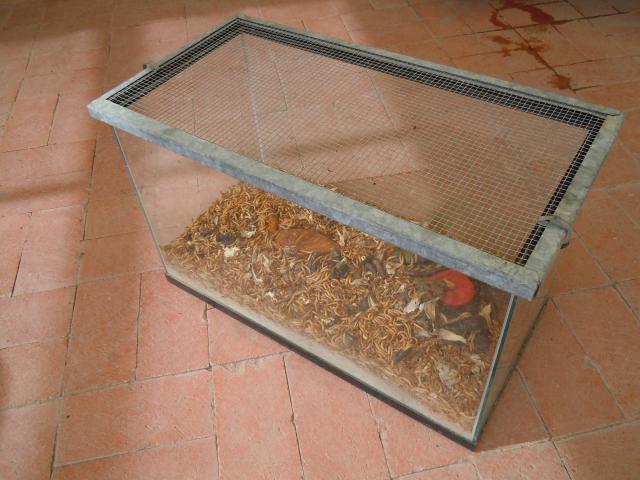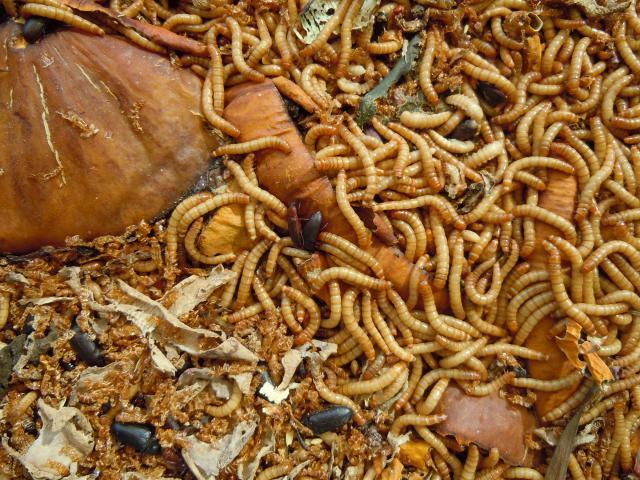The beetles will eat a large portion of their own eggs so for the highest yield I recommended that you move the beetles into a new container with fresh feed every week. Or at least monthly. Allowing the eggs to stay behind in the old container to develop.
I did this for quite some time when feeding bluebirds. Worked like a charm. I used 3 sets of plastic Sterilite drawers and about 50 beetles with occasional replacements. Moving the beetles to the next drawer weekly keep me in more worms than the wild birds could eat. About 1/3 cup a day. It took about a month to 6 weeks in nice weather before the worms got big enough to start feeding out. I did find that all the worms didn't grow at the same rate so there was always different sized worms in the drawers. When i got most of large worms out of a drawer i could put the beetles back in the drawer. I would keep that up until the feed needed changing.
I got careless after a while and had over a hundred beetles and ended up with swarms of worms. Ended up doing a recipe i found on the internet to dry them out like you buy them in stores. You put the worms in a old never to be used for anything else again fry pan. Spray it and the worms with a product like Pam and turn the heat on very low. Stirring until the worms are all dried out and shinny.
After raising meal worms for a few years now I am not recommending you use the drawer system i used to grow your worms in. I found that in about a year the beetles had gnawed on the plastic so much that they could get footholds in the plastic and climb out of the drawers. I switched over to covered containers, I cut a large square out of the lid and use window screen hot glued over the hole for ventilation. I don't find beetles running around inside the house anymore. I had been housing them in the garage but when they get loose they'll get anywhere, so use a container or containers with lids.




